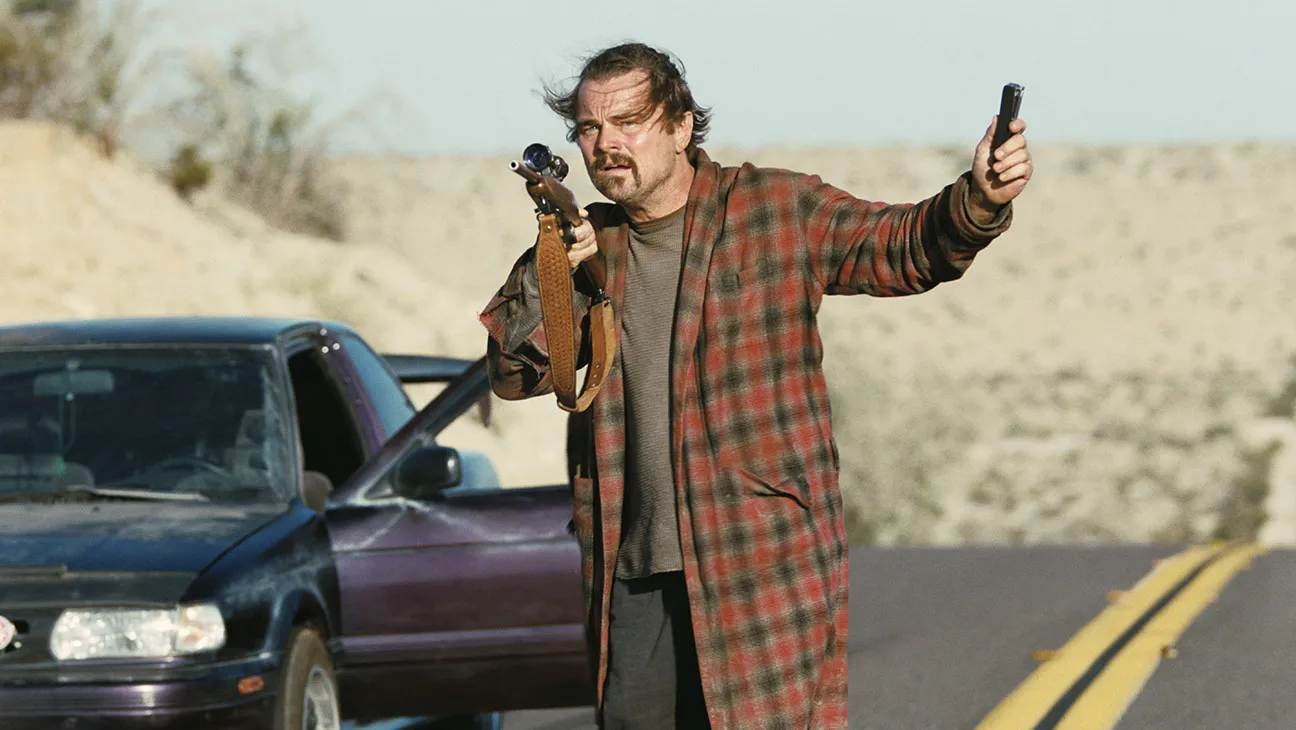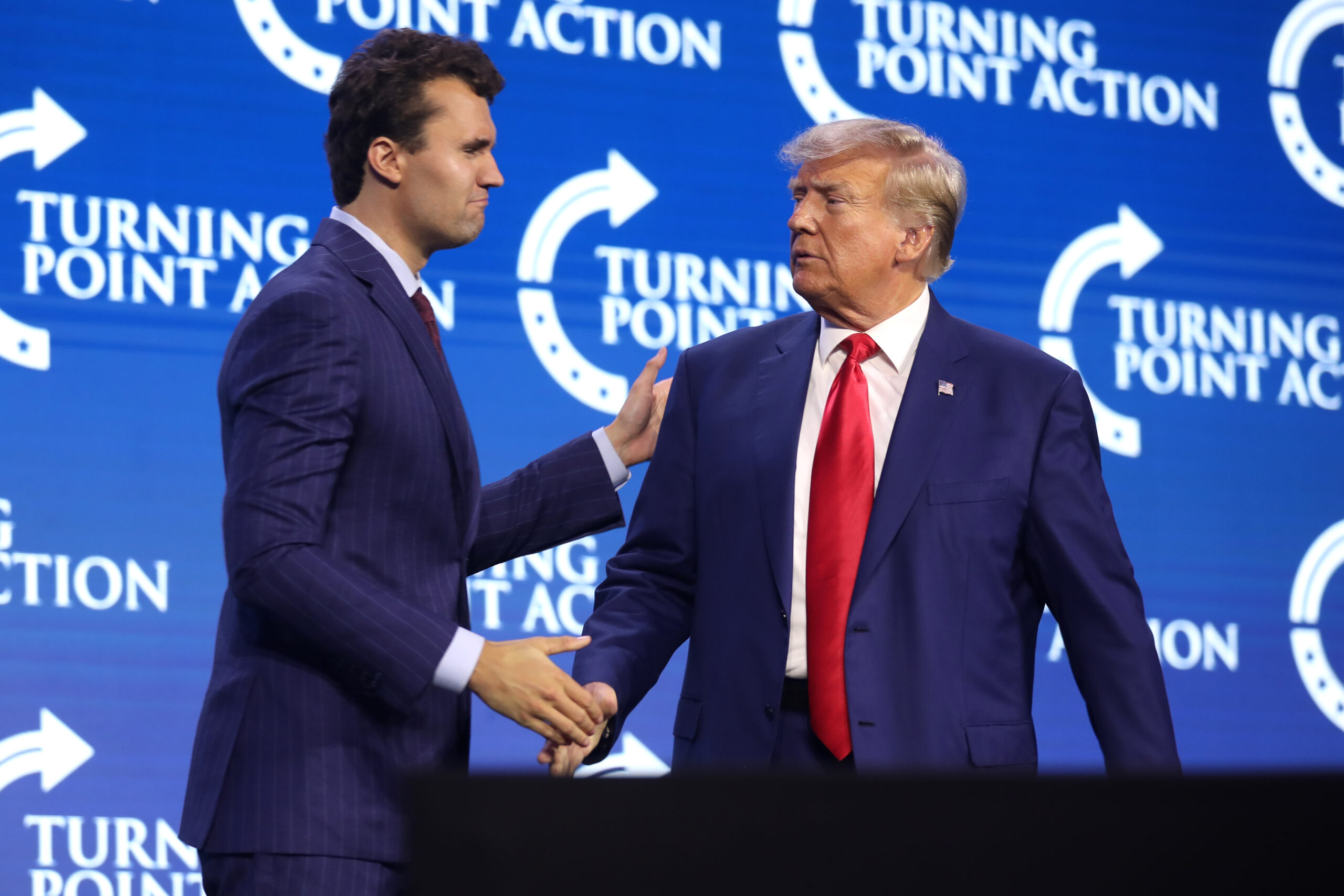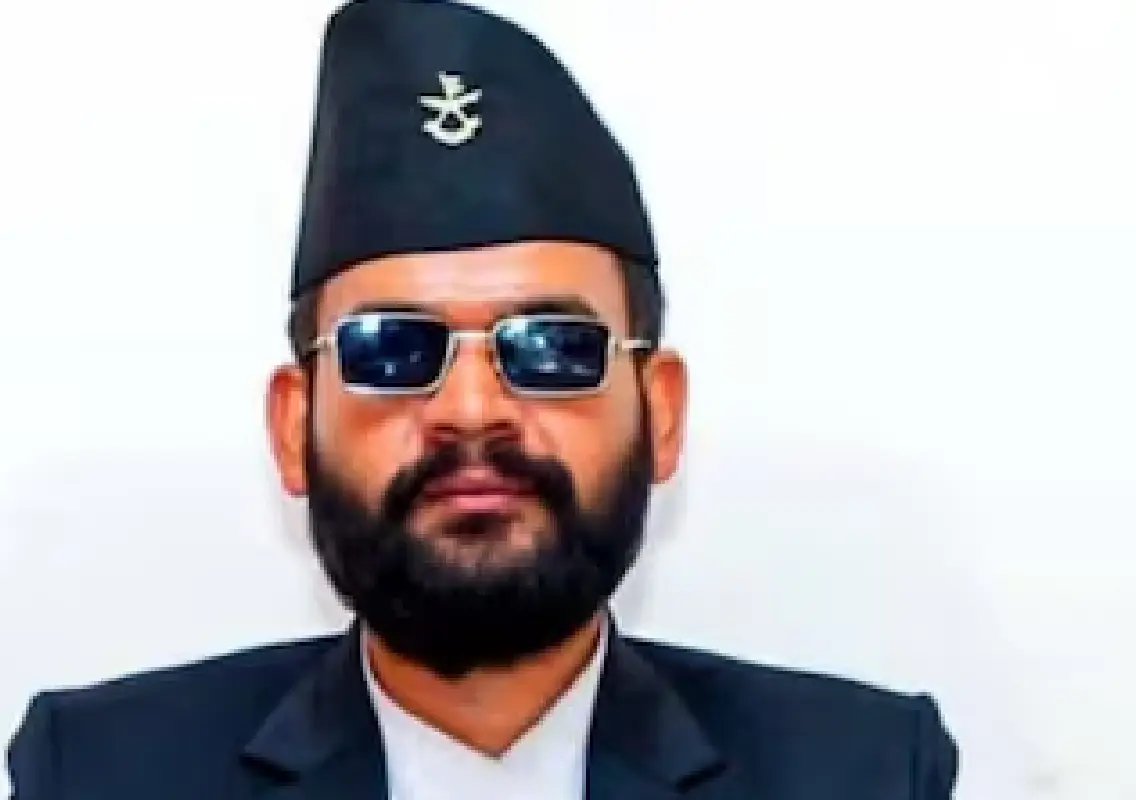
The director Paul Thomas Anderson has only made four films set in the present day. Save for that handful, and for a lovely detour to the United Kingdom, he has spent his career rooting around in the junk drawer of American history, exploring its madmen and prophets, its lost souls staggering through shellshocked post-war days.
The end-of-the-world party of Boogie Nights gave way to the primal horror of There Will Be Blood, then to The Master’s portrait of the mid-20th-century spiritual hunger, then to the wastoid hippie-burnout of Inherent Vice. After taking some time to attend to matters of the heart in 2017’s Phantom Thread, Anderson chose to revisit the 1970s Los Angeles of Boogie Nights, only through Licorice Pizza’s sentimental prism. He had, in some ways, closed the loop, freeing him to turn around and face the reality that was rushing at him, and at all of us.
And thus One Battle After Another, a bracingly timely film loosely based on the 1990 Thomas Pynchon novel Vineland. Both One Battle After Another and Vineland concern the ebb and flow of radicalism in America, bursts of activity followed by years of dangerous and disillusioning fallout. Anderson has contemporized the timeline, situating us in our dismayingly recognizable era of fascist creep and following a sadly less recognizable underground effort to stop it. It is a frightening and galvanizing vision, Anderson putting away his complicated nostalgia for old (and more easily understood) days to confront, with disarmingly noble purpose, the here and now.
Leonardo DiCaprio plays Bob Ferguson, an explosives expert working with a faction of revolutionaries who bomb buildings, rob banks and stage rescue raids on deportation camps. Bob is the main squeeze of the group’s fiery leader, Perfidia Beverly Hills (Teyana Taylor), a passionate but reckless advocate for reproductive rights, open borders and Black liberation. Her ferocious ardor is so magnetic that even an avowed enemy like vicious jackboot Col. Steven Lockjaw (Sean Penn) feels drawn to her. What ensues from that attraction sets One Battle After Another on its years-spanning odyssey of deliverance and reprisal.
Anderson is not at all coy in his assertion that Lockjaw and the government he serves are largely motivated by seething racism, a brutish insistence on superiority meant to mask inadequacy and inevitably involving some kind of psychosexual conflict. Lockjaw’s desire for Perfidia is one of both shame and dominance, a seamy wish to submit to her power as a way to prove its ultimate meaninglessness. He is a vile creation, almost cartoonish in his determined villainy, and he bears a chilling resemblance to real men operating in our world today. Whether or not Anderson plays fast and loose in his blunt depiction of racial politics will no doubt be a matter of some debate. But it is certainly a refreshing jolt to see a big picture like this analyze the squalid motivations of the people currently dispatching the National Guard to major cities and empowering ICE to spread far and wide in its cruel project.
One Battle After Another is a furious film, a richly engaging and persuasive polemic from a filmmaker who has never shied from provocation but who has not before spoken so directly to his audience. Anderson seems incensed and horrified by the current American moment, frightened for his own mixed-race wife and children, and for all marginalized people being so stridently attacked and demeaned across the nation every day.
But there is a weariness here, too, a resigned cynicism that carries the film into its second act, which zooms ahead some 15 years and finds Perfidia’s child, Willa (Chase Infiniti), now a teenager living in hiding with her father, Bob. What is left of Bob’s old revolutionary group, the French 75, has gone to ground, sending furtive signals out into the universe now and again but otherwise lying dormant. Well, Bob is dormant at least, losing himself to the deadening pleasures of booze and weed and barely maintaining watchful vigil over his daughter. He has not become complacent, exactly, but time away from the cause has softened his resolve. He’s forgotten the old customs and codes, he has let the flame dwindle to almost nothing.
Anderson does not condemn Bob for his lassitude — how could any of us who mostly sit idly by while a terrible power closes its fist around us and our neighbors criticize another for doing the same? But he does stir Bob out of his stupor, perhaps hoping to do the same to us. With little warning, Lockjaw comes roaring out of the past, hurtling headlong toward Bob and Willa as they scramble to evade him. Throughout this long chase, Anderson shows a previously unseen aptitude for action and suspense; One Battle After Another is, essentially, a thriller, albeit one teeming with enormous ideas about the collapse and possible rescue of the country.
The tension does relent some in the narrative’s middle stretch, in which DiCaprio is encouraged to do a little too much stoner comedy, clad in a Dude-style bathrobe and all. Anderson has always had trouble fighting such indulgent impulses, seeding comedy throughout his films where, arguably, comedy isn’t required. (His most organically funny movie is, of course, Phantom Thread.) But enough is happening around DiCaprio’s antics that the film can sustain itself until Anderson regains focus.
Benicio del Toro pops up as a small business owner who secretly works to ferry targeted immigrants to safety. Anderson’s depiction of this process — a clever and orderly network of seemingly anonymous people performing clandestine miracles — is one of the most stirring aspects of the film, inspiring in its testament to mutual aid while sorrowful that such things have to exist at all. That is perhaps the rousing central argument, even reassurance, of One Battle After Another: that all around us people are working to help one another, that there is a communal bond which no repressive government can truly understand or tear asunder. And if such systems exist, what can the rest of us do to help them?
One Battle After Another is not sappy or moralizing in that sentiment. It is bleak, tough, grimly sardonic. Anderson packs in the nightmarish details: the Lacoste shirts and Patagonia vests of murderous white supremacists, Lockjaw’s absurd and almost Hilterlian hairdo. But there is strange and abundant loveliness, too: the silhouettes of rebel boys darting across nighttime rooftops, skateboards in hand; desert roads rising and falling like waves on the ocean. All of it is scored by Jonny Greenwood’s ever-mutating compositions, at times winsomely jazzy, other times groaning with dread. The film is often ugly and beautiful at once, Anderson making the most of his VistaVision cameras but not being overly flashy in his technical conceits.
I suppose there is little time for preening when there is such a crucial mission at hand. One Battle After Another is the rare American film released in these benighted times of ours — with the backing of a major studio, no less — to be clear and insistent in the target of its anger, its despair and its prescriptions for what might make things better. Anderson does not operate with blinkered hope; his movie pays sober reverence to the brutal losses suffered already and to those inevitably to come. But he insists, in his film’s glorious and just-shy-of-corny final seconds, that there is still something like a future out there, past the smoke and ruin, worth struggling toward, inch by agonizing inch. The title of the film could be read as an exhausted lament. It could be a rallying cry, too.



